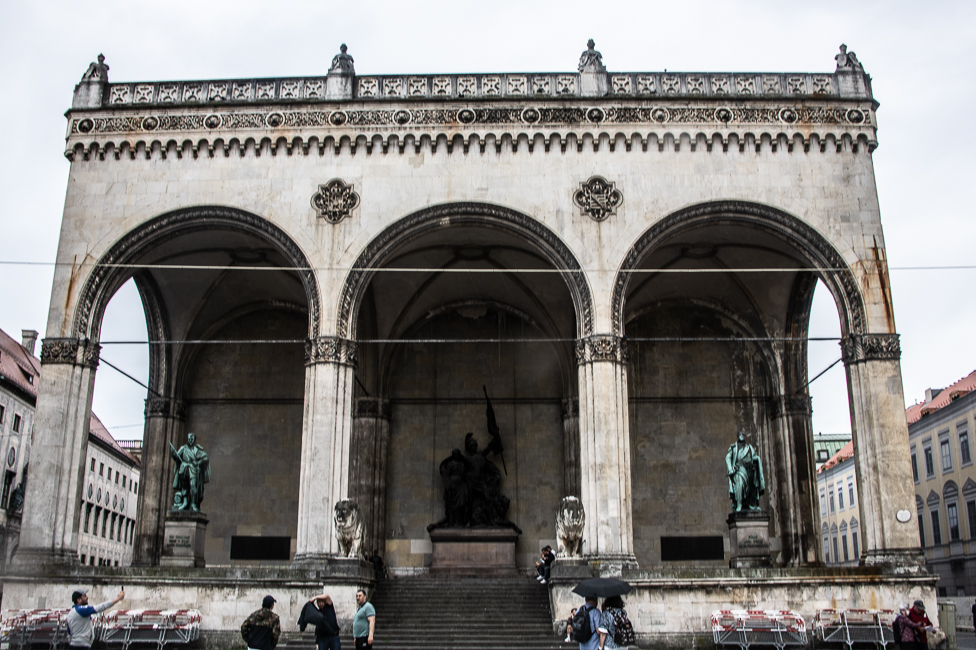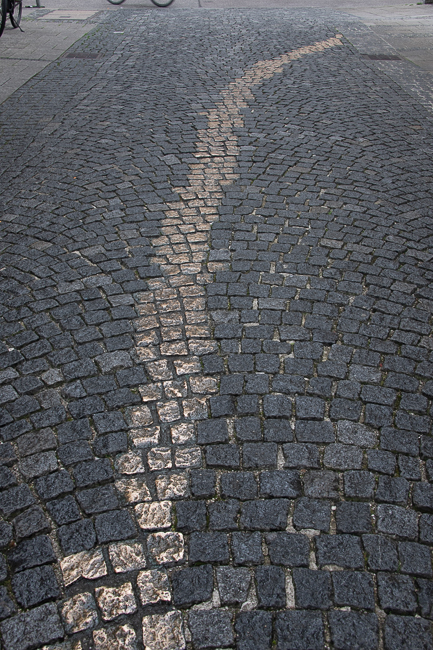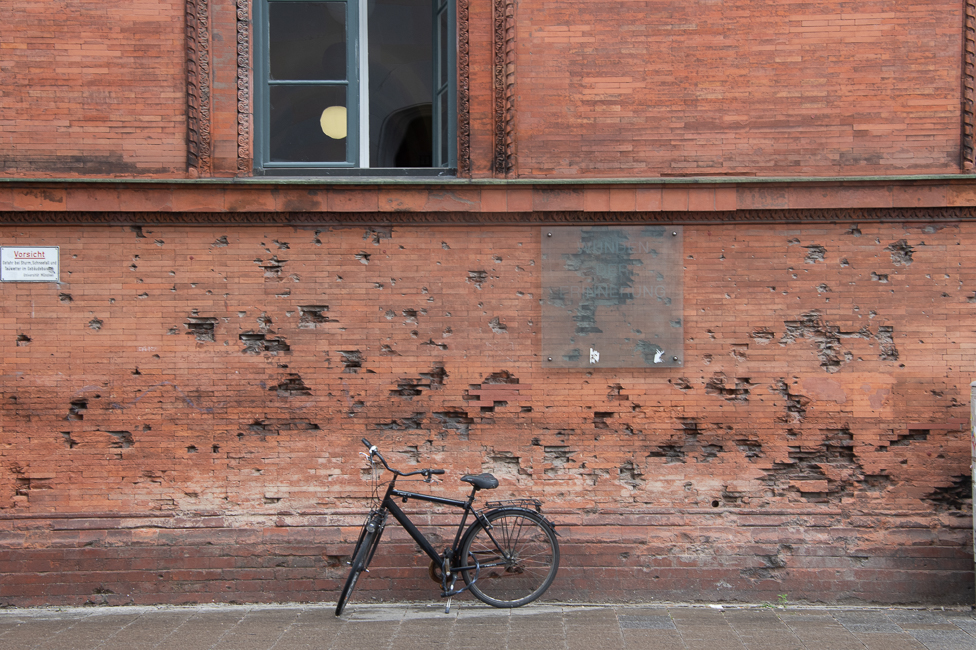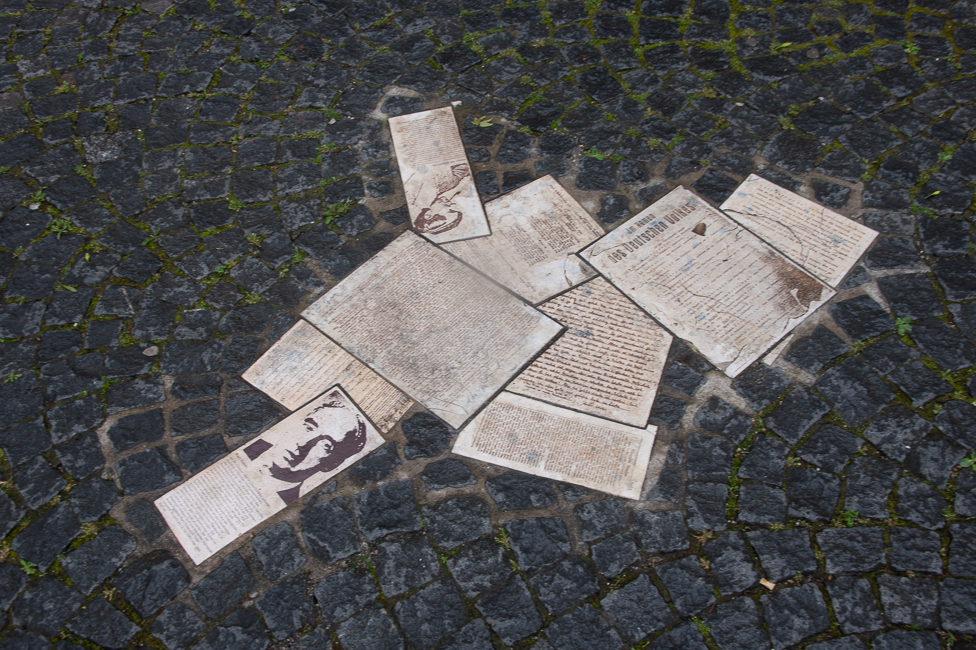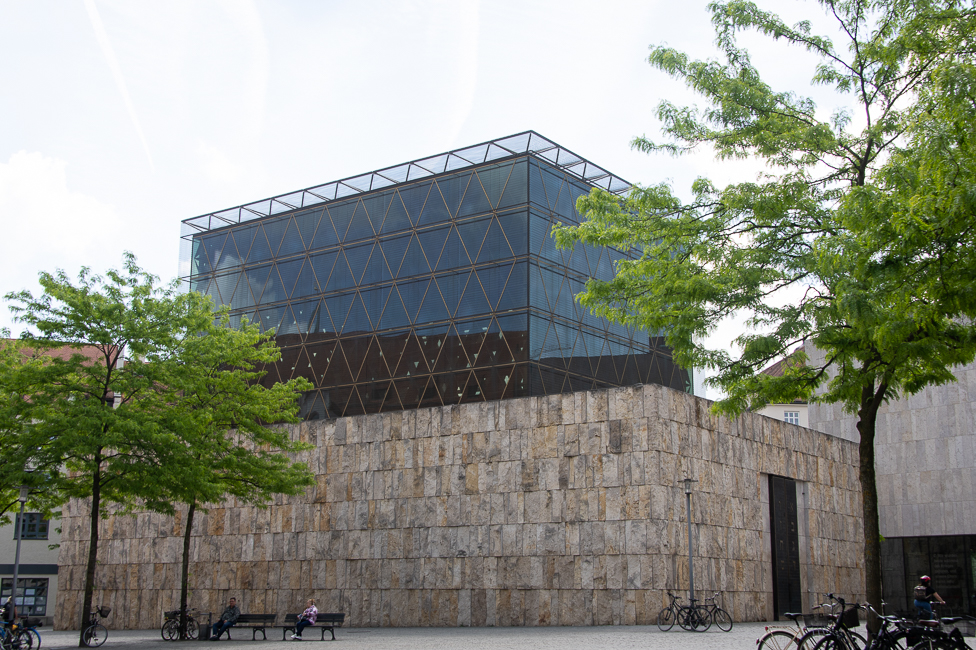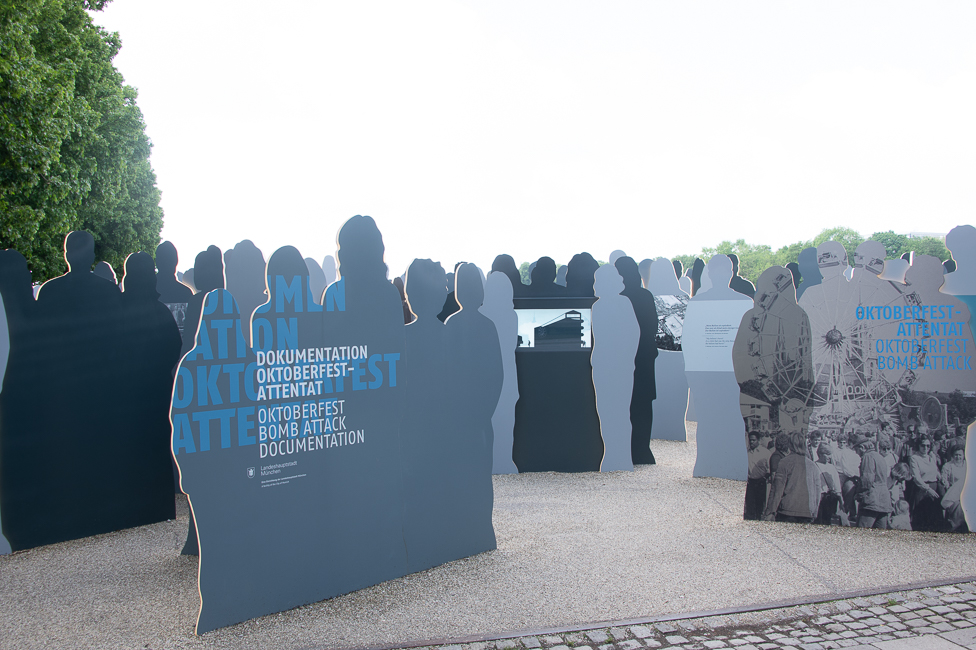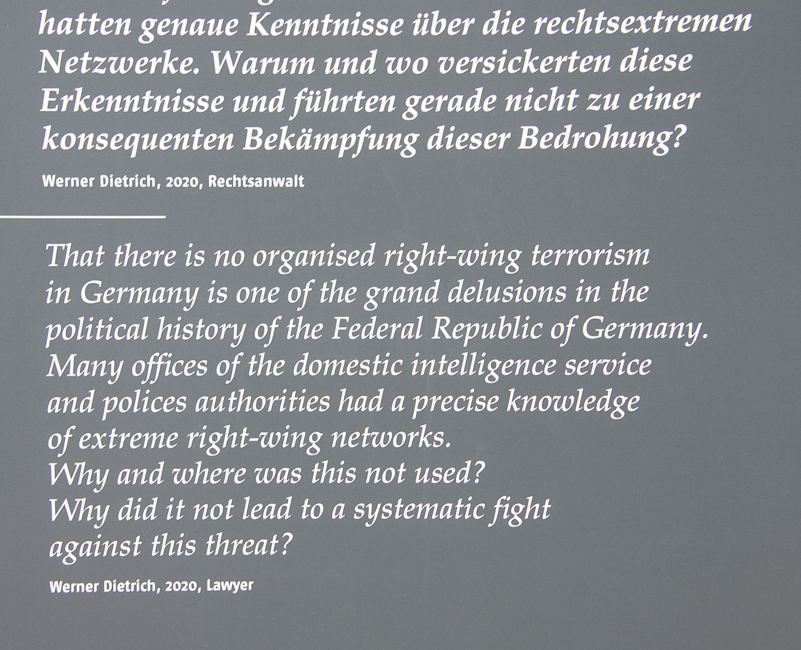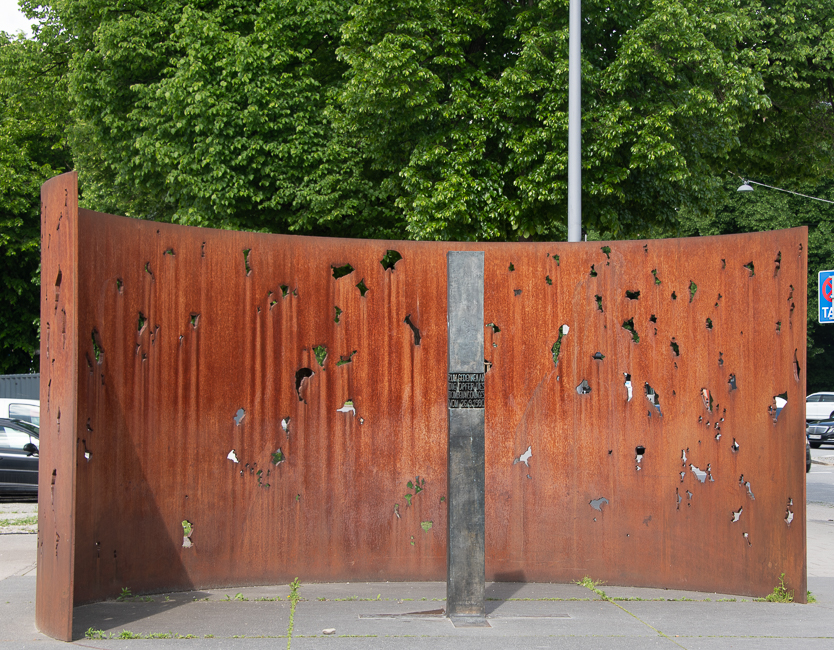Dealing with Difficult Times
I often find it unsettling to be in Germany. The people are absolutely wonderful, and the beer is grand, but their history weighs heavy. That being said, I feel that the Germans are far better than many societies at confronting the horrors of the past and honoring those that suffered.
World War II
The Beer Hall Putsch saw the deaths of four Bavarian policemen and 16 Nazi marchers in front of the Feldherrnhalle. This confrontation led to the arrest of Adolf Hitler for treason. Once the Nazi party came into power, Hitler declared the site a national landmark, and required that all that pass by perform the Nazi Salute. Officers were stationed at the site to ensure this happened.
Just behind the Feldherrnhalle is the street, Viscardigasse.
As an act of passive resistance those opposed to giving the salute would take an alternate route around the monument using the Viscardigasse. Originally named after a Swiss architect, the alley eventually became known as the “Drueckebergergasse,” roughly translated as “Shirker’s Alley” or “Deserter’s Alley.” The line was painted some time after the war but I have not been able to find out by whom or exactly when.
The fact that there was a “Shirker’s Alley” also points to the fact that not all Germans bought into the Hitler regime.
“Wounds of Memory” was installed in 1993 It was part of a European wide project where artists were finding ways to confront the horrors of WWII. The artists used mass produced panes of glass to transform bullet holes and other ‘injuries’ left by bomb fragments and grenades into visible scars.
White Rose was a non-violent, intellectual resistance group in Nazi Germany led by five students and one professor from the University of Munich. The group conducted an anonymous leaflet and graffiti campaign that called for active opposition to the Nazi regime. Their activities started in June 1942, and ended with the arrest of the core group by the Gestapo in February of 1943. They and other supporters faced show trials by the Nazi People’s Court with many of them sentenced to death or imprisonment.
Hans and Sophie Scholl, as well as Christoph Probst (three of the core members) were executed by guillotine four days after their arrest on February 22, 1943.
In countries all over Europe Jews were heavily persecuted under the Nazi Regime, and today the construction of the Ohel Jakob Synagogue and the Jewish Museum behind it is a step towards commemorating the horror of the Holocaust.
An earlier time
I almost walked right over this, as do so many others I am sure, but it caught my eye instantly.
Kurt Eisner was the first Bavarian Prime Minister and he was murdered on February 21, 1919 in Munich. The Minister had lost the state elections in January and intended to announce his resignation to the State Parliament. Shortly after informing officials of his resignation, Eisner was shot and killed by Anton Graf Arco-Valley, an officer close to conservative right-wing circles and died on the spot
The memorial was designed by Erika Maria Lankes and dedicated in 1989 on the 70th anniversary of Eisner’s death. The memorial sits where the officer put two bullets in the back of the Prime Minister’s head at close range.
The memorial consists of outlines on a steel plate, as if they were marked with chalk by the police.
Modern Day Tragedies
On September 26, 1980 a bomb exploded at the entrance to the Oktoberfest. The bombing was attributed to the right-wing extremist and geology student Gundolf Köhler, who was instantly killed in the attack as the bomb exploded prematurely.
The Documentation Project is interactive, one walks around and reads in German and English. These are just a few of the signs that struck me.
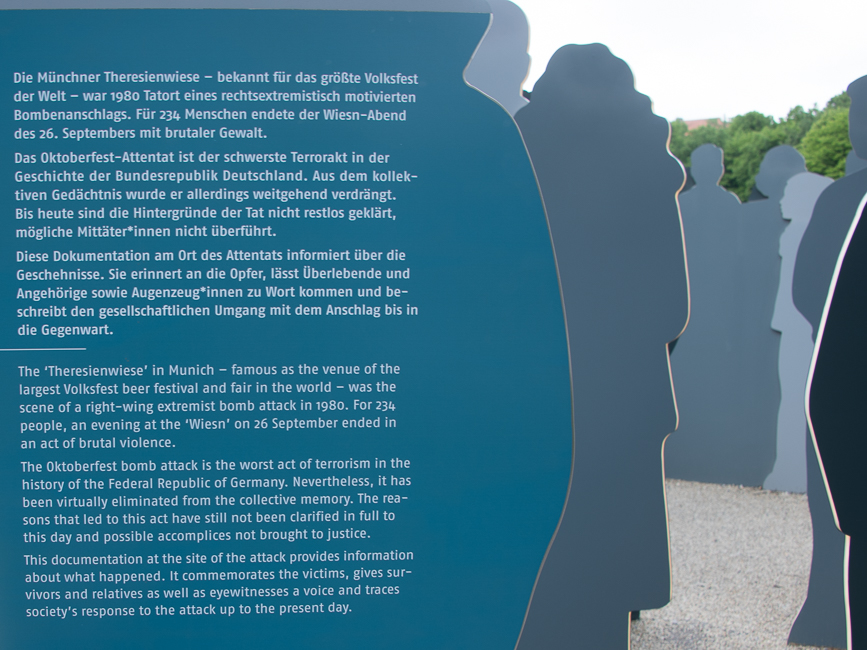 *
*
 *
*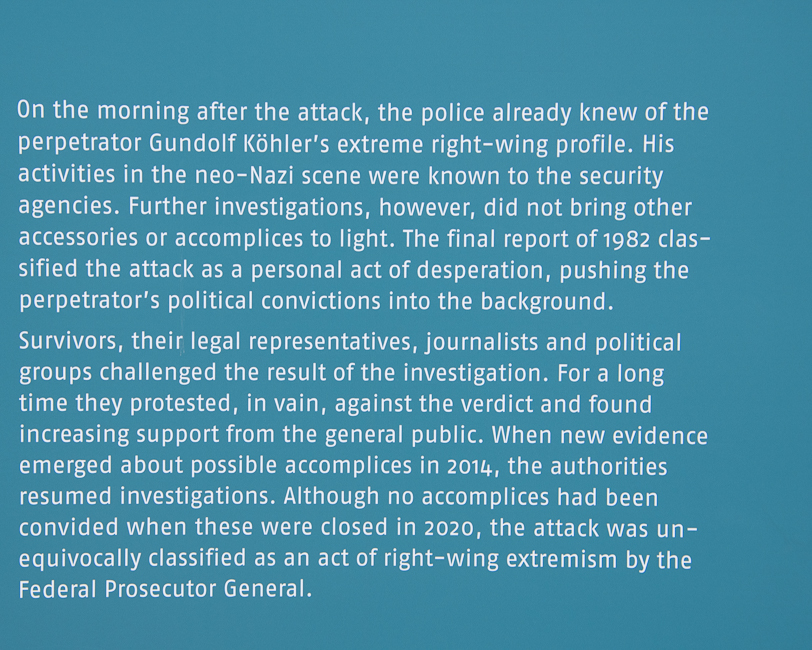
One of the reasons that the cases were closed is that much of the evidence has since been destroyed. In 2020 a 1.2 million euro ($1.4 million) fund was set up to aid victims.
At the entrance to the Oktoberfest grounds is a memorial.
The bronze stele was created by Friedrich Koller in 1981. It extends onto the ground in the shape of a cross. The names of those who died were added to the stele in 1987.
The large piece behind was done by the artist in 2007. The semi-circular steel wall has openings as if pierced by an explosion. On the ground are splinters set in the concrete representing the twelve victims killed.
I have studied public art for many years, and have been impressed with the attitude the Germans have taken in teaching the dark side of history in hopes these things never happen again.
